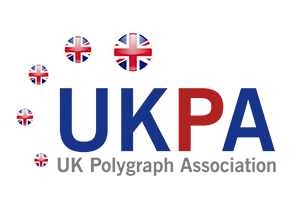THE POLYGRAPH TEST
A polygraph test, commonly known as a lie detector test, typically lasts between 2 to 3 hours, although it can sometimes exceed this duration. The comprehensive examination comprises three primary phases: a thorough pre-test interview, followed by the collection of charts during the test, and finally, the meticulous analysis of these charts by trained professionals. Renowned for its accuracy and reliability, Polygraph tests are widely regarded as the gold standard technique for determining the truthfulness or deception of an individual in relation to a specific issue.
During the pre-test interview, the examiner will take the time to thoroughly explain the functioning of the polygraph, discussing the specific issue at hand, and meticulously developing and reviewing all the questions that will be asked during the polygraph test. This stage typically requires the most time to complete, ranging anywhere from 45 to 90 minutes depending on the complexity and intricacy involved.
During this critical phase, the subject will securely be attached to the state-of-the-art polygraph machine, ensuring precise and accurate measurements. The meticulously crafted set of questions that were meticulously developed during the comprehensive pre-test interview will be thoughtfully and repeatedly posed to the subject, fostering an environment that allows for thorough and comprehensive analysis.
Once the examiner has carefully collected all the polygraph charts, he or she will meticulously analyze the results. This examination is conducted to determine the subject’s truthfulness or deception in relation to the specific issue at hand. The examiner will weigh various indicators and scrutinize the patterns present in the charts, considering all relevant factors before reaching a final decision.
Indeed! During the polygraph test, the examiner proficiently constructs the questions solely based on the information provided in relation to the test issue. Furthermore, it is customary for the examiner to carefully review these questions with you, ensuring clarity and understanding before the testing procedure commences. Rest assured, all the questions are meticulously designed to adhere to the rigorous standards of the latest and most advanced polygraph techniques, guaranteeing utmost accuracy in the test results. Prior to the commencement of the test, a comprehensive discussion takes place between the examiner and the subject, where all questions are thoroughly examined and answered exclusively with a simple “yes” or “no” response.
There doubt that when it comes to assessing truthfulness, the polygraph has proven to be highly reliable. However, this reliability is contingent upon two crucial factors. Firstly, the person administering the polygraph test must undergo proper training to ensure accurate interpretation of the results. Secondly, the technique employed should be thoroughly validated, guaranteeing consistent and valid outcomes. By adhering to these standards, the polygraph can be a valuable tool in determining truthfulness in various contexts.
Thegraph, commonly known as a lie detector test, functions by monitoring and tracing changes in a person’s physiological responses during questioning. These changes, which can include fluctuations in heart rate, blood pressure, and sweat gland activity, are meticulously recorded onto polygraph charts for subsequent review and analysis. Over the years, extensive research projects have identified specific physiological patterns associated with truthfulness or deception, further enhancing the effectiveness of the polygraph. Our highly trained examiners have dedicated countless hours to mastering the art of interpreting polygraph chart data, utilising a comprehensive range of techniques and methodologies. By attaching four specialized components to the subject, the polygraph charts are generated, providing valuable insights into the individual’s physiological reactions and aiding in the determination of truth or deception.
Two convoluted rubber pneumograph tubes are placed around the subject’s upper chest and abdomen on the outside of their clothing, these record respiration and movement.
The GSR or Galvanic Skin Response is monitored by placing two finger plates across fingers, or two adhesive sensors directly on the hand. These plates trace changes to the skin resistance during the examination.
This component traces changes to the subjects relative blood pressure and pulse rate and it is similar to the pressure cuff your doctor uses when taking your blood pressure. Alternatively a finger blood pressure cuff may be used.
After the polygraph test has been completed the examiner will read and review the generated charts to establish the test results. The agreed questions will always be asked a minimum of twice before results can be determined.






